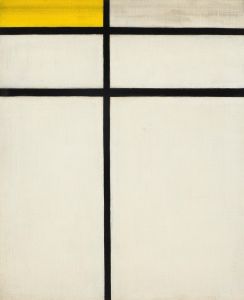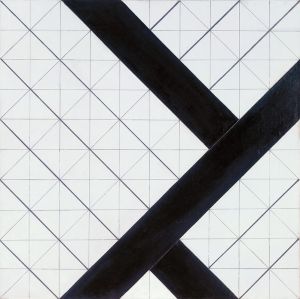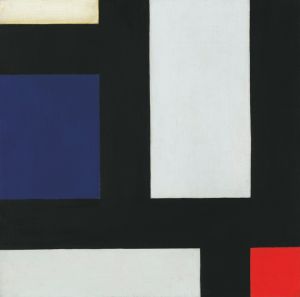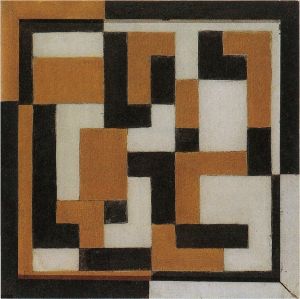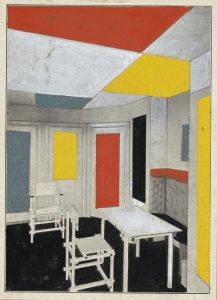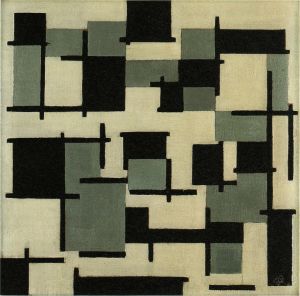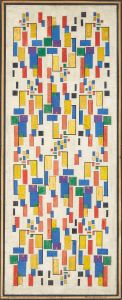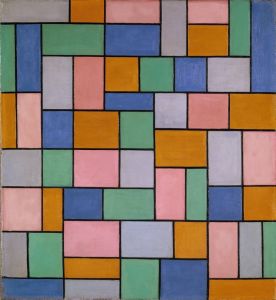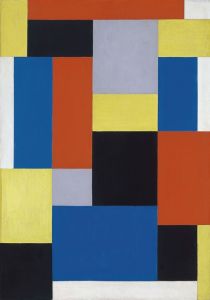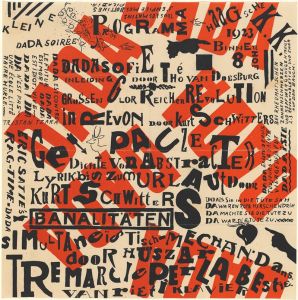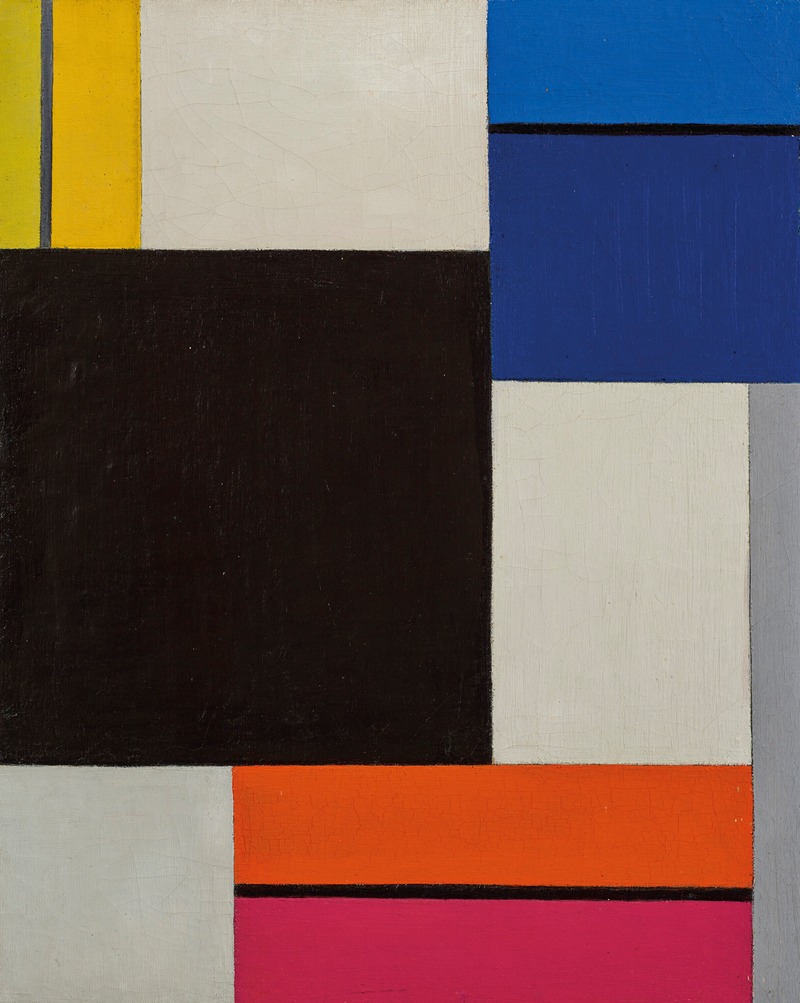
Composition XXI
A hand-painted replica of Theo van Doesburg’s masterpiece Composition XXI, meticulously crafted by professional artists to capture the true essence of the original. Each piece is created with museum-quality canvas and rare mineral pigments, carefully painted by experienced artists with delicate brushstrokes and rich, layered colors to perfectly recreate the texture of the original artwork. Unlike machine-printed reproductions, this hand-painted version brings the painting to life, infused with the artist’s emotions and skill in every stroke. Whether for personal collection or home decoration, it instantly elevates the artistic atmosphere of any space.
Theo van Doesburg's "Composition XXI" is a notable example of De Stijl, an art movement that emerged in the Netherlands around 1917. Van Doesburg, born Christian Emil Marie Küpper in 1883, was a central figure in this movement, which emphasized abstraction and simplicity, focusing on basic visual elements such as geometric forms and primary colors.
"Composition XXI" was created in 1925, during a period when van Doesburg was deeply involved in exploring the principles of De Stijl. The movement, also known as Neoplasticism, was co-founded by van Doesburg and Piet Mondrian. It sought to express a new utopian ideal of spiritual harmony and order through pure abstraction and reduction to the essentials of form and color.
The painting exemplifies the De Stijl aesthetic with its use of straight lines, right angles, and a limited palette of primary colors (red, blue, and yellow), along with black, white, and gray. These elements are arranged in a balanced and harmonious composition, reflecting the movement's emphasis on order and clarity. Van Doesburg's work often incorporated diagonal lines, which distinguished his style from Mondrian's more rigidly horizontal and vertical compositions.
"Composition XXI" is characterized by its dynamic interplay of geometric shapes and vibrant colors. The use of diagonals in this piece adds a sense of movement and tension, which was a distinctive feature of van Doesburg's approach to De Stijl principles. This divergence from Mondrian's strict orthogonality was a point of contention between the two artists, ultimately leading to a split within the movement.
Van Doesburg's contributions to De Stijl extended beyond painting; he was also an influential writer, architect, and theorist. He edited the journal "De Stijl," which disseminated the movement's ideas and showcased the works of its members. Through his writings and artistic practice, van Doesburg played a crucial role in shaping the development of modern art and design.
"Composition XXI" is housed in the Kröller-Müller Museum in Otterlo, Netherlands, which holds an extensive collection of works by van Doesburg and other De Stijl artists. The museum's collection provides valuable insights into the evolution of the movement and its impact on 20th-century art.
In summary, "Composition XXI" by Theo van Doesburg is a significant work within the De Stijl movement, reflecting the artist's commitment to abstraction, geometric forms, and a limited color palette. The painting's dynamic composition and use of diagonals highlight van Doesburg's unique approach to the movement's principles, distinguishing his work from that of his contemporaries. Through his artistic and theoretical contributions, van Doesburg left a lasting legacy in the world of modern art.





